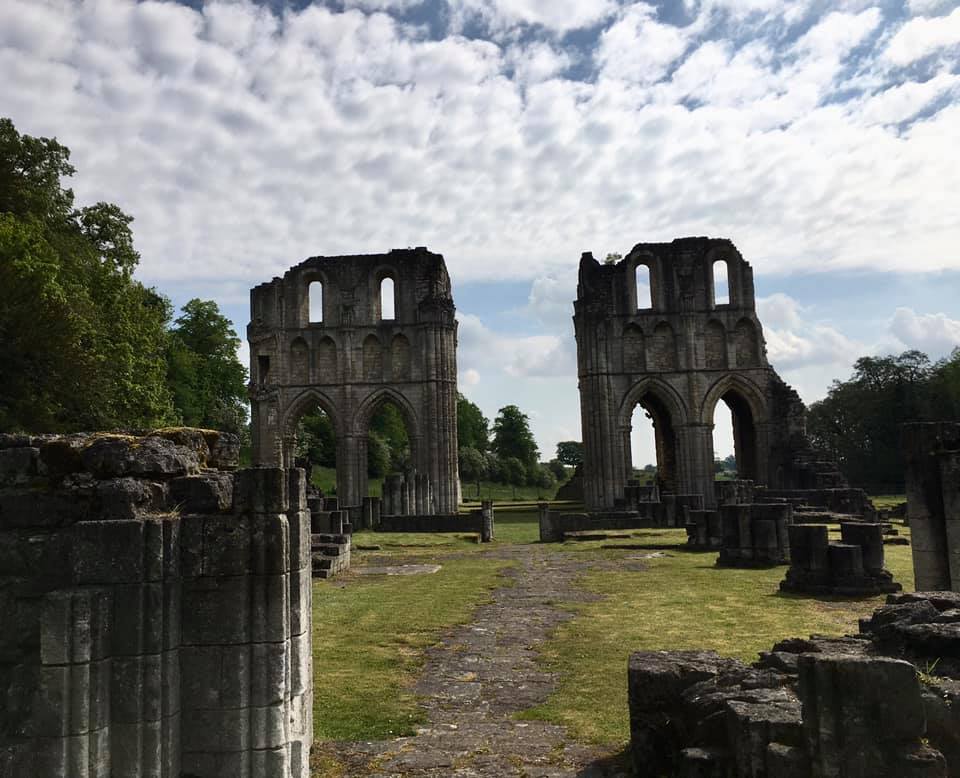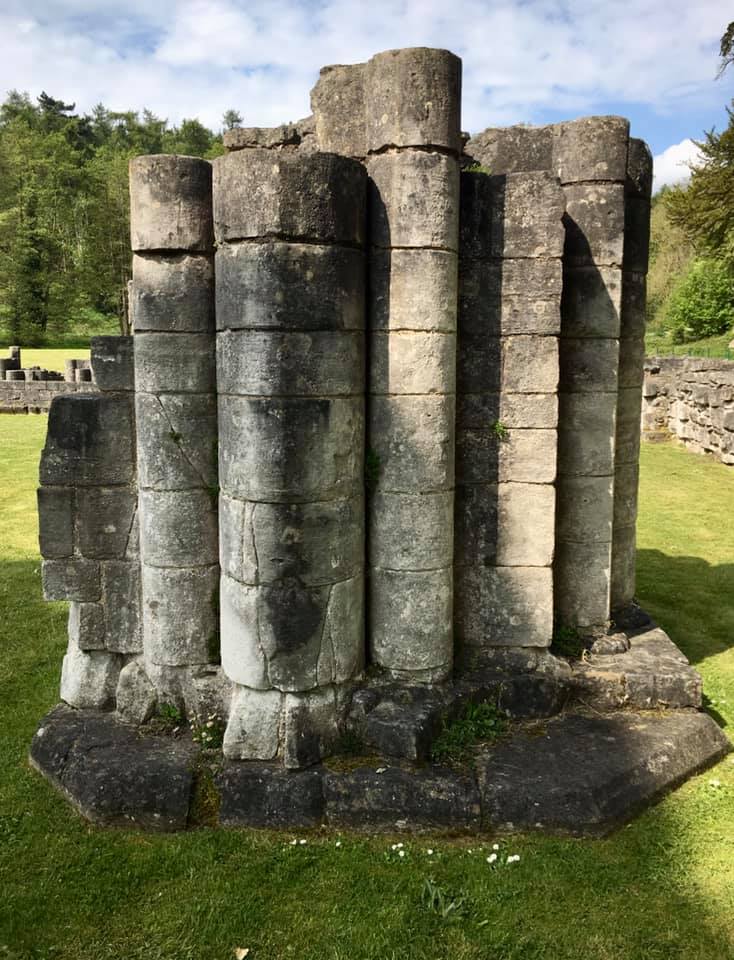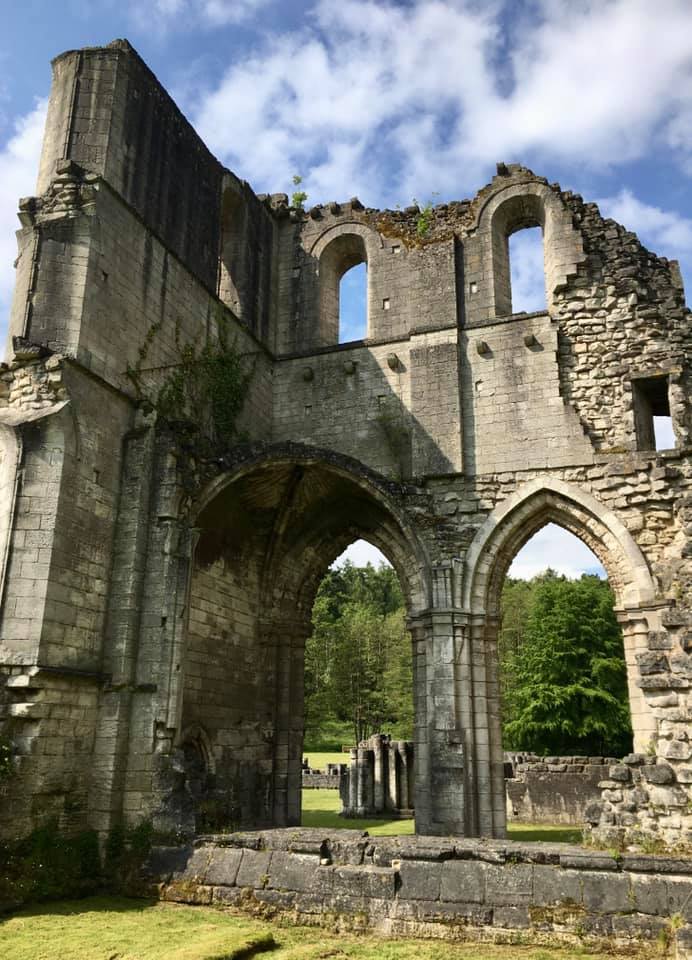Even in the summer, a visit to the ruins of any abbey in England is likely to prompt recollection of Shakespeare’s sonnet no. 73:
That time of year thou mayst in me behold
When yellow leaves, or none, or few, do hang
Upon those boughs which shake against the cold,
Bare ruin’d choirs, where late the sweet birds sang.
In me thou seest the twilight of such day
As after sunset fadeth in the west,
Which by and by black night doth take away,
Death’s second self, that seals up all in rest.
In me thou seest the glowing of such fire
That on the ashes of his youth doth lie,
As the death-bed whereon it must expire
Consumed with that which it was nourish’d by.
This thou perceivest, which makes thy love more strong,
To love that well which thou must leave ere long.
Thanks to a top tip from Julie Mellor, a seven-mile trip out this morning from Rotherham to Roche Abbey, established by the Cistercians in 1170 and dissolved in 1538, certainly did so for me.



But it also brought to mind Peter Levi’s magnificent long poem, ‘Ruined Abbeys’, poem no. 111 in his Collected Poems 1955–1975, Anvil, 1976:
Monastic limestone skeleton,
threadbare with simple love of life[,]
speak out your dead language of stone,
the wind’s hammer, the stone’s knife,
the sweet apple of solitude
And:
Ruins are like a strong body
growing its strength in country air
then breeding age until you see
nettles are waving in its hair,
the ruined body keeps its shape
by the mechanics of landscape:
fox in the gorse, wind in the tree,
raincloud, fellside, mystery:
what was born wild is never tame:
ten numbers never written down,
fellsides and abbeys are the same:
until time draws like a deduction
true proportions for their destruction.
The poem was written when Levi was still a Jesuit, and, like the best of his poetry, has a simple, likeable mysticism which bears his vast erudition lightly. I must get a copy of Brigid Allen’s biography of Levi, himself the biographer of Horace, Virgil, Shakespeare, Milton, Tennyson and Pasternak. 13 years ago, I spent a wonderful week at Heythrop College in Oxfordshire, which was formerly the UK headquarters of the Jesuits and where Levi trained for the priesthood. I was occupied, officially at least, by undertaking a Prince2 course, but my memories are mostly of exploring the extensive grounds, muntjac deer and all, and writing haiku in beautiful May sunshine. Among Levi’s many other books is The Frontiers of Paradise, 1987, subtitled ‘A Study of Monks and Monasteries’, which is a favourite of mine, not because I have, or ever have had, any leanings towards the monastic life, but because it’s a richly entertaining book, with many unexpected laughs.
Roche sits snugly below the limestone promontory from which its name derives, and straddles Maltby Dike which provided water for washing and beer, presumably upstream of its use as a depository from the latrine. It’s a beautiful setting, as ruined abbeys almost always are. No wonder that Turner, Constable, Piper, Sutherland and others were drawn to paint them so often. On a day like today, when the sun has finally arrived to announce the start of summer, the scene at Roche looked very beautiful indeed. It reminded me very much of Waverley Abbey, near Farnham in Surrey, the Cistercians’ first abbey in England. There, I wrote this haiku, published in Presence no. 54 and undoubtedly echoing Levi subconsciously:
ruined abbey:
the dark mullein’s yellows
light the transept
I wrote some more haiku this morning. It would have been rude not to, since they’re such inspiring places.
Leave a comment